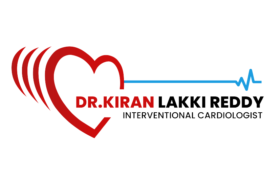Catheter-directed thrombolysis


Catheter-directed thrombolysis (CDT) is a treatment procedure used to dissolve blood clots in the blood vessels, both the arteries and in the veins. It is a minimally invasive approach that involves using a catheter to deliver clot-dissolving medication directly to the site of the clot. It is indicated in conditions like Peripheral artery thrombosis, Deep vein thrombosis, Pulmonary embolism. Here’s an overview of the CDT procedure:
- Procedure Setup: CDT is typically performed in a hospital setting. The patient is given local anesthesia to numb the area where the catheter will be inserted. In some cases, sedation or general anesthesia may be used.
- Catheter Insertion: A small incision is made, usually in the groin or the arm, and a catheter (a thin, flexible tube) is inserted into a blood vessel. Guided by imaging techniques such as fluoroscopy or ultrasound, the catheter is threaded through the blood vessels until it reaches the site of the clot.
- Thrombolytic Medication Delivery: Once the catheter is properly positioned near the blood clot, a clot-dissolving medication, such as alteplase (tissue plasminogen activator), is infused through the catheter directly into the clot. The medication helps break down the clot and restore blood flow.
- Monitoring and Duration: The progress of the thrombolysis procedure is monitored through imaging, such as X-rays or ultrasound, to assess the clot dissolution and restoration of blood flow. The duration of the treatment depends on various factors, including the size and location of the clot. CDT can take several hours or 1-2 days.
- Post-Procedure Care: After the completion of CDT, the catheter is removed, and pressure is applied to the insertion site to prevent bleeding. The patient may be monitored in the hospital for a period to ensure stability before being discharged. Anticoagulant medications or other blood-thinning medications may be prescribed to prevent further clot formation.
Catheter-directed thrombolysis is primarily used to treat deep vein thrombosis (DVT) or other acute clotting disorders like Acute Pulmonary embolism, Acute peripheral artery thrombosis. It can help relieve symptoms, restore blood flow, and potentially reduce the risk of long-term complications associated with blood clots.
While CDT can be an effective treatment option, it is not suitable for everyone. The decision to undergo CDT depends on various factors, including the location and extent of the clot, the patient’s overall health, and the potential risks and benefits of the procedure. A healthcare professional specializing in vascular or interventional radiology can evaluate the individual case and determine if CDT is appropriate or if alternative treatments are more suitable.
Fill This Form
Get In Touch
- +91 90149 44654
- lakki.reddy.63@gmail.com
- CANES - Cardio & Neuro Clinic, 3rd Floor, Tapasavi Commercial Complex, Hi-tension Rd, Kondapur, Hyderabad,
Copyright ©2023 All rights Reserved to Drkiran Lakki Reddy ll Develop & Design by Branding Nuts
